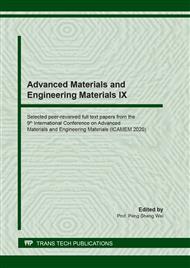p.388
p.395
p.401
p.409
p.414
p.421
p.429
p.438
p.446
Research on Effect of Equivalent Diameter of Voids on Sound Absorption Performance of Porous Asphalt Concrete Based on Grey Entropy Method
Abstract:
The sound absorption performance of porous asphalt concrete (PAC) is inseparable from the sizes of voids, as different sizes of voids have different absorption effects on noise in different frequency bands. However, the relationship between the two is not clear. In this study, the equivalent diameter of voids was obtained by the proposed image segmentation algorithm based on the square area, then grey entropy method was used to analyze the effect of different equivalent diameter of voids on the sound absorption performance of PAC in the frequency range of traffic noise. The results show that with the increase of air voids, the peak and average sound absorption coefficient of PAC increase, the sound absorption performance of PAC is improved; and the sound absorption performance of PAC is mainly affected by the equivalent diameter of voids of 3-4mm.
Info:
Periodical:
Pages:
414-420
Citation:
Online since:
September 2020
Authors:
Price:
Сopyright:
© 2020 Trans Tech Publications Ltd. All Rights Reserved
Share:
Citation:


